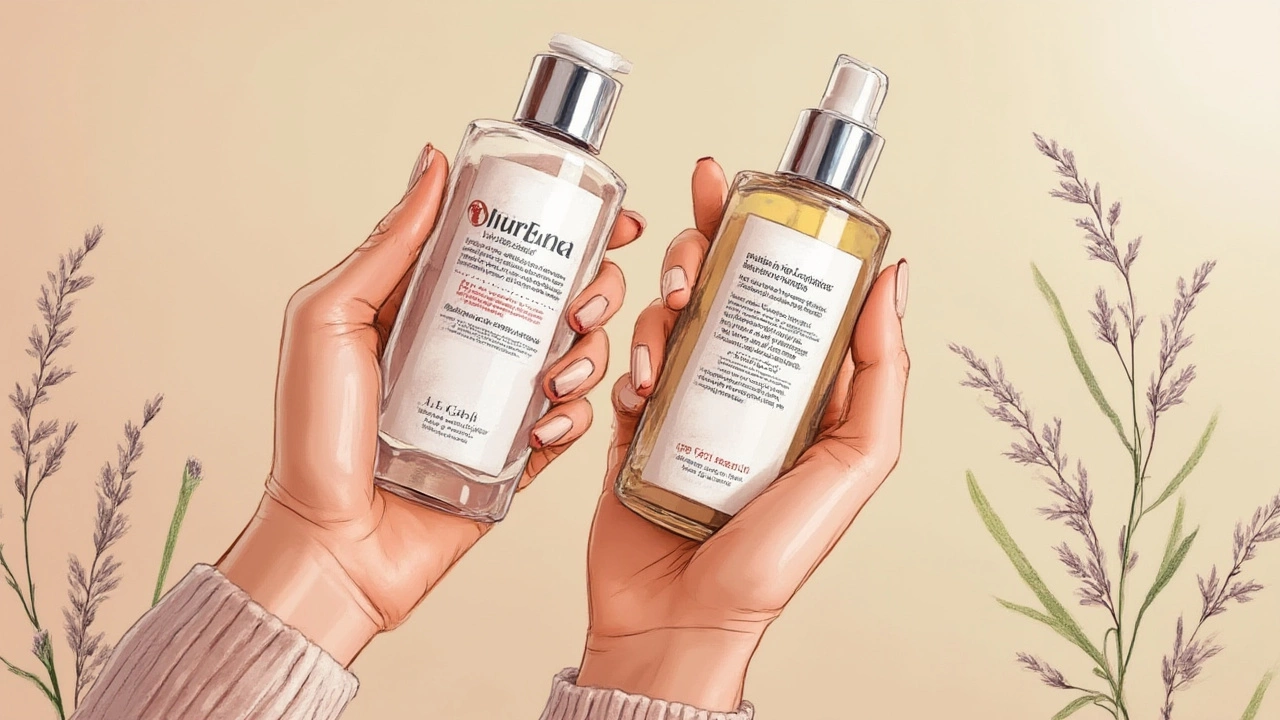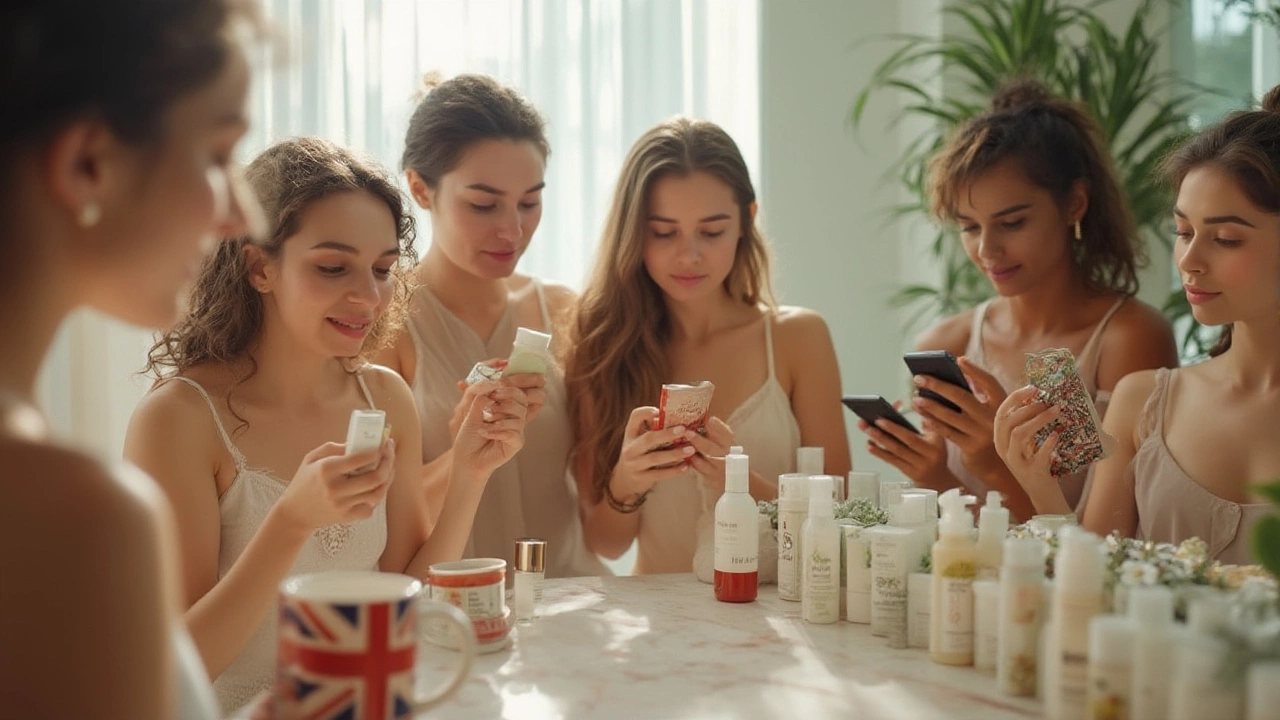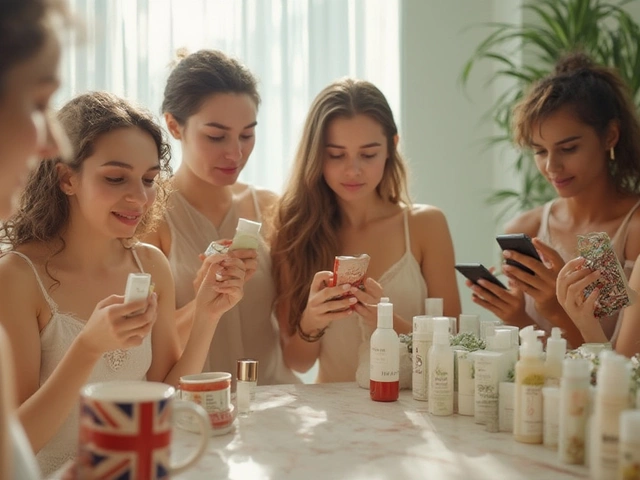How about this: the average woman puts over 160 different chemicals on her skin every single day. Shocking, right? That’s a real stat from the Environmental Working Group, and it’s enough to make anyone take a second look at what’s in those pretty bottles lining the bathroom shelf. We crave dewy skin and glossy hair, but sometimes the price we pay isn’t just on the label—it’s hidden in the ingredients list. That’s why figuring out which beauty products are actually healthy isn’t just a trend, it’s basically a survival skill. If you’re tired of decoding labels or wondering if “natural” means anything anymore, you’re not alone. Welcome to the wild world of healthy beauty products—where hype, hope, and hard science collide.
What Makes a Beauty Product “Healthy”?
The word “healthy” gets tossed around so much, it kind of loses meaning. When it comes to beauty products, though, it boils down to a few basics: safety, skin-compatibility, and real, positive effects without the baggage of nasty side effects. So, what’s the secret sauce? For starters, healthy products avoid controversial or harsh chemicals—think parabens, phthalates, formaldehyde, and synthetic fragrances, which have all gotten big red flags from medical experts in the past decade. The FDA isn’t as tough on beauty products as you might think—they only ban or restrict 11 ingredients in cosmetics, while the EU blocks over 1,300. Yup, you read that right.
If you see buzzwords like “organic,” “non-toxic,” “clean,” or “natural,” don’t just assume you’re safe. The U.S. has hardly any legal requirements for these terms. So, safe beauty is less about the label, more about the actual ingredient list. Look for short ingredient lists with names you can pronounce, and check for certifications you recognize. USDA Organic, EWG Verified, COSMOS, Ecocert, and Leaping Bunny for cruelty-free are all signals you’re looking at something created with health in mind.
But healthy beauty is also about your skin’s needs. Even a “natural” product can cause allergic reactions. Healthy means avoiding ingredients that personally irritate you—like essential oils if you’re super-sensitive, or coconut-derived cleansers if they clog your pores. Here’s a myth-buster: Just because it’s from a plant, doesn’t make it 100% safe for everyone. Always patch-test, keep tabs on what your skin loves or hates, and don’t rely too much on brand promises.
Check out this table for a quick rundown of ingredients to watch (and which to welcome):
| To Avoid | Better Options |
|---|---|
| Parabens (methyl-, propyl-) | Potassium sorbate, sodium benzoate |
| Phthalates (DEP, DBP) | Natural plant oils, essential oil blends |
| Formaldehyde releasers (DMDM hydantoin) | Radish root ferment filtrate |
| Synthetic fragrance | Unscented, or naturally-scented (e.g. lavender or vanilla) |
| Sulfates (SLS, SLES) | Sodium cocoyl isethionate, decyl glucoside |
| Mineral oil, petrolatum | Jojoba oil, shea butter |
Want to dig deeper? There are apps like Think Dirty and the EWG’s Skin Deep Database where you can scan barcodes or look up products. You’ll see safety ratings, ingredient breakdowns, and where your favorite cleanser actually lands on the “healthy” scale.
Must-Have Healthy Beauty Staples (Plus Secret Heroes)
So, what deserves a golden spot in your beauty lineup if you want max benefit with minimal risk? Let’s break down the power players across skincare, hair care, and makeup. If you’re into multitaskers and products that actually work, the market right now offers way more choices than even five years ago. In 2025, the healthy beauty scene is booming—everyone from major brands to tiny indie shops is rolling out “clean” lines, but some stand out way above the rest.
For skincare, gentle cleansers with low-foaming coconut or sugar-derived surfactants are a win—look for formulas with few ingredients, like Pai Camellia & Rose Gentle Cleanser or OSEA Ocean Cleanser (which is packed with algae extracts that soothe and hydrate). Toners loaded with rose water or witch hazel (alcohol-free, always) calm your skin, and moisturizers that skip silicones and mineral oils—like Weleda Skin Food or Drunk Elephant Lala Retro—bring deep hydration without the junk.
Let’s get real: Sunscreen isn’t optional, but not all are created equal. Mineral sunscreens with non-nano zinc oxide or titanium dioxide, like Supergoop’s Unseen Sunscreen or Attitude Mineral Sunscreen, will protect you from UVA and UVB without potential hormone disruptors like oxybenzone. If you want to keep makeup safe and simple, Ilia Super Serum Skin Tint and Kosas Revealer Concealer are killing it this year with clean, vegan formulas that blur imperfections and boost your glow.
Don’t forget about your lips! Many name-brand balms are actually loaded with petroleum derivatives and artificial flavors. Go for Hurraw! or Eco Lips—they use candelilla wax, coconut and jojoba oils, and real herbs for softness and a hint of shine. Nail polish? Try Zoya or Ella+Mila—they’re “10-free,” meaning they skip the top ten ugly chemicals you don’t want near your fingers.
Here’s a list of unexpected healthy beauty heroes you probably aren’t using (but should):
- Bentonite clay masks for gentle, deep pore detox (no microplastics, ever)
- Rosehip oil for fading dark spots and boosting collagen
- Squalane (plant-based) for non-sticky, ultra-moisturizing results
- Konjac sponges for gentle physical exfoliation
- Solid shampoo bars with minimal paper packaging—better for your hair and the planet
One weird fact: Skin can actually get addicted to certain occlusive agents like petrolatum, which is why making healthy swaps matters. If you stop using them cold turkey, you might feel dry for a few weeks, but nature-based alternatives will help your skin balance itself out in the long run.

How to Read Ingredients Like a Pro
You can’t just trust front-of-package claims. Ingredients are listed in descending order by quantity, so pay attention to what tops the list. For example, if a product says it’s organic argan oil but water and mineral oil outrank argan, you’re not getting much of the good stuff. The fewer the unpronounceable chemical names, the better your chances for truly healthiest beauty products. A good rule: If you wouldn’t put it in your mouth, think twice before letting it soak into your face.
Watch for “fragrance,” “parfum,” or “flavor”—these are blanket terms that can hide dozens of undisclosed ingredients. Brands aren’t legally required to spell these out, so allergic reactions or long-term health risks can sneak up. If you need a scent, choose products with essential oils (but cautious if your skin’s reactive).
Here’s a quick cheat sheet when picking healthy products:
- Certifications matter, but ingredient transparency matters more—always scan the list
- Seek shorter ingredient lists; less often means more potency
- If you’re vegan or cruelty-free, look for Leaping Bunny, PETA, or Certified Vegan logos
- For sensitivity, skip alcohol, strong acids, or high concentrations of fragrance oils
- Use apps or websites to check unfamiliar names—don’t play guessing games with your skin
Companies love to use green packaging or words like “eco” and “hypoallergenic” without official backing. Call their bluff. If a product claims to be “dermatologist recommended,” it actually just means one dermatologist somewhere liked it. If it says “all-natural,” it only needs to have one plant-based ingredient to use the term. Don’t get caught by clever marketing tricks—it’s your face, not a test subject.
Check batch codes if you want to double-check freshness. Some websites decode these for you, so you know you’re not buying stockpiled, expired items. If you DIY your beauty, stick to recipes that have some type of preservative—like vitamin E or rosemary extract—or make tiny batches and keep them in the fridge.
Are the Healthiest Beauty Products Actually Effective?
Here’s where things get real—because why bother with healthy products that don’t work? The good news is, a bunch of studies back up the benefits of plant-based and non-toxic ingredients over time. For instance, squalane (originally from olives or sugarcane) hydrates better and with less irritation than mineral oils. Vitamin C serums made with pure L-ascorbic acid, ferulic acid, and no synthetic dyes show clear skin-brightening and anti-aging effects within weeks. Shea butter has published clinical data showing it improves skin elasticity and moisture barrier… so yes, healthy doesn’t mean watered down.
The catch? Healthy beauty can act slower, but the results last longer and don’t come with “withdrawal” after you quit using the product. A study in the Journal of Dermatological Treatment (2023) found people who switched to all-mineral sunscreen had fewer breakouts and less stinging, even if their previous chemical sunscreens protected against sunburn. The same year, a consumer report on clean makeup brands showed consistent coverage and high satisfaction, without the dryness some get from traditional long-wear products. So if you’re patient, the payoff is real.
Just because a product avoids harsh stuff doesn’t mean it’s boring. Some of the healthiest options use bioengineered plant extracts, like bakuchiol (a retinol alternative from the babchi plant), which helps fade fine lines without the common irritation of prescription retinoids. Brands like Biossance, Herbivore, and Youth to the People use advanced lab extraction to keep their ingredients stable and potent—think caffeine from green tea to de-puff eyes, or tremella mushroom (nature’s hyaluronic acid) for deep plumping. They’re proof you can have performance without the poison.
Some healthy products are designed for layering, so you can customize for morning or night, dry or oily, without the risk of weird chemical reactions. Remember: Your skin microbiome matters, and overusing strong acids or antibacterial agents can mess things up. Healthy beauty is about balance, not overkill. Grab samples, test on your wrist, and listen to your skin—it’ll throw tantrums if you overload it, but the right healthy product lineup calms, hydrates, and brings that natural glow we all chase.

